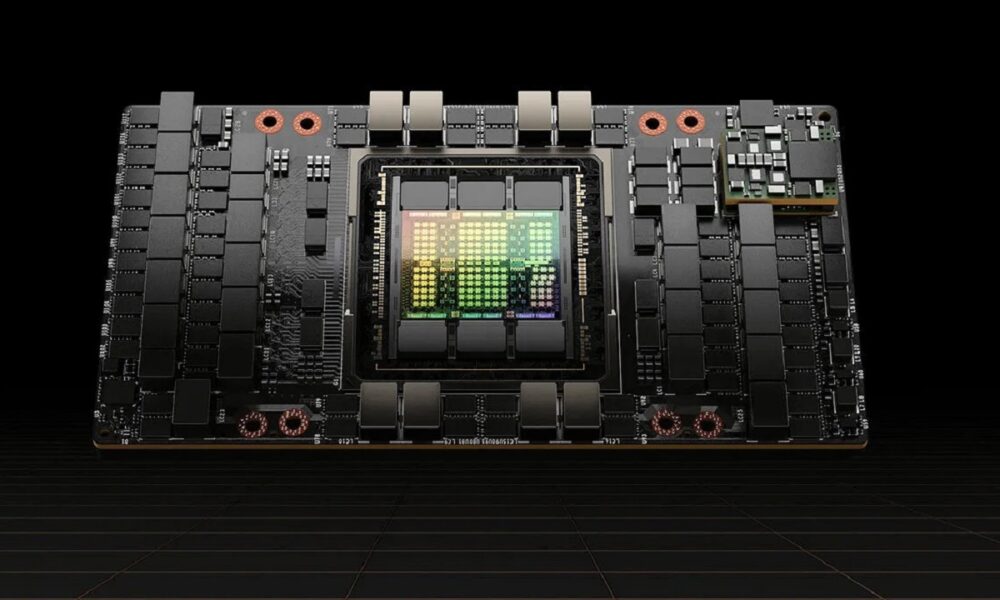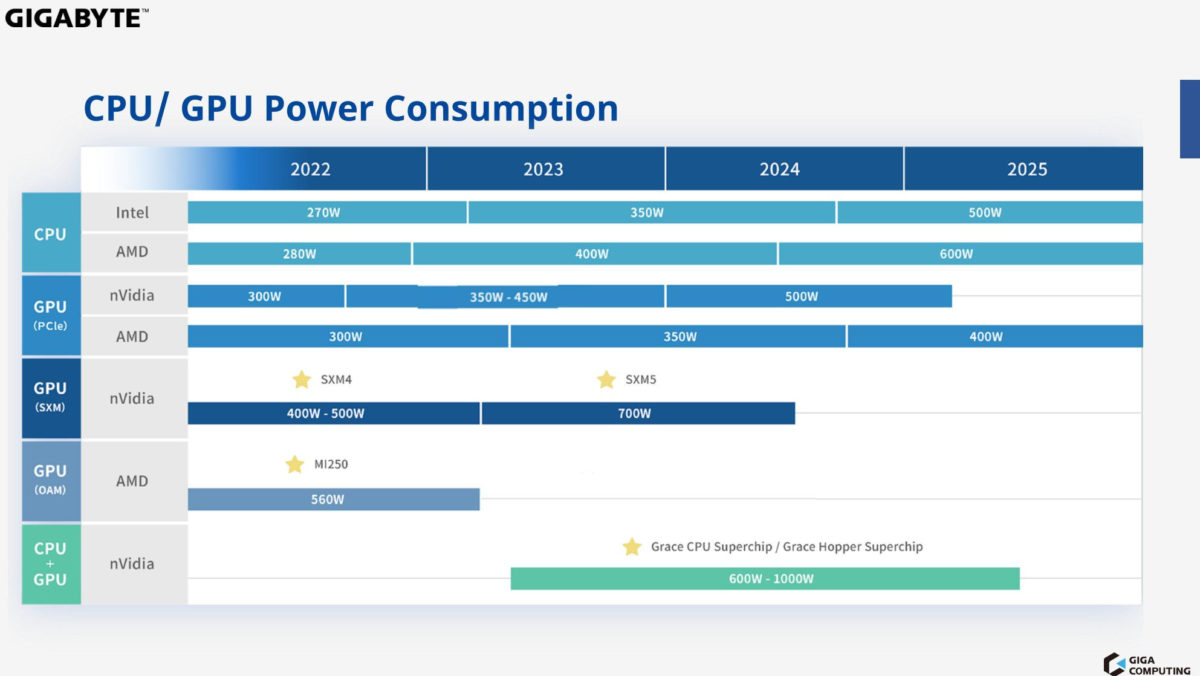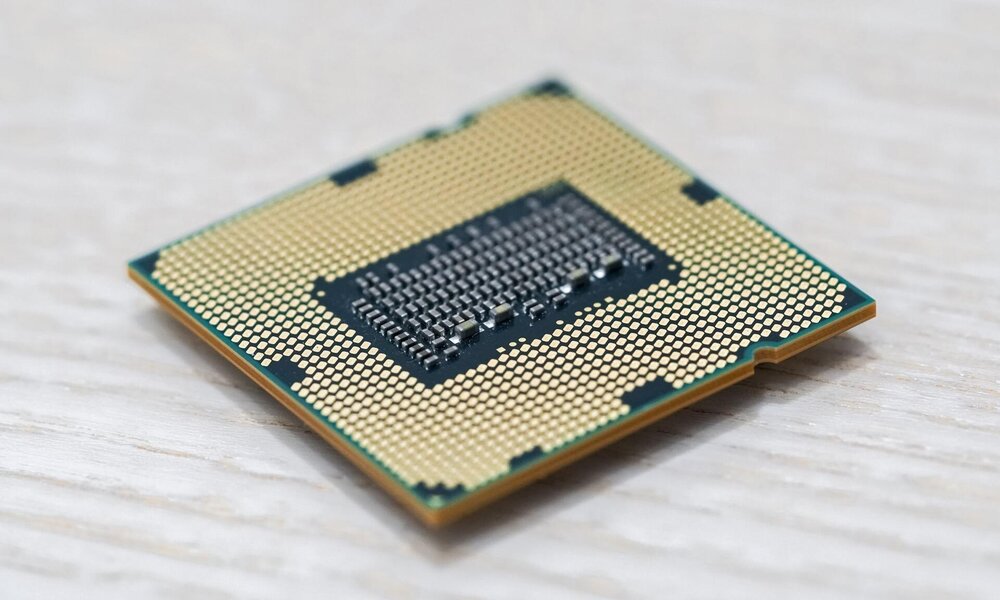
A GIGA COMPUTING roadmap has revealed interesting details about the consumption of upcoming high-performance components for servers, making it abundantly clear that they will only increase. The image is very easy to interpret, since it directly associates release dates, components and consumption in a very clear way.
In the case of Intel and AMD CPUs we have been perplexed, since an increase from the 350 watts of 2023 and 2024 is contemplated up to 500 watts for Intel and 600 watts for AMDboth by 2025. For NVIDIA’s PCIe graphics solutions, a jump is expected from 350–450 watts to 500 watts, and in the case of AMD from 350 watts to 400 watts.
Continuing with the GPUs, although in this case in SXM format, we see that in the case of NVIDIA we went from a consumption of up to 500 watts to a maximum of 700 watts that will be maintained until 2024. In the case of AMD we just don’t have more information for now on other form factors. The roadmap closes with the consumption of NVIDIA CPU and GPU solutions, such as the Grace Hopper super chip, which has a consumption of up to 1,000 watts.
It is important to keep in mind that we are talking about high-performance components that have nothing to do with those used in the general consumer market, and that in the end even if new manufacturing processes are used and the size of the transistors is reduced to get a power boost need to increase consumptiona reality that we have been seeing clearly in recent years, and that will not change in the medium term.
Certain solutions that reach the market are still concerned with better balancing consumption, such as the NVIDIA RTX 4000 SFF, but we are dealing with a graphics card aimed at workstations and not at servers and data centers, a sector where Consumption matters, but power does too plays an increasingly important role. We must bear in mind that the higher the consumption, the greater the heat generated, and that this will also end up being a challenge in the coming years, seeing the trend in the industry.




